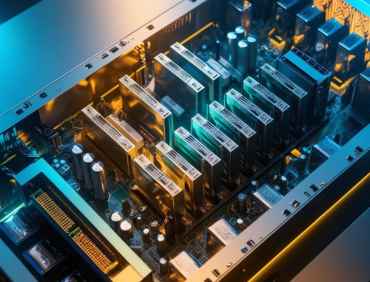
Dealing with a computer that wakes up unexpectedly from sleep mode can be quite frustrating. This issue not only disrupts your work but can also impact the overall efficiency of your device. Understanding the reasons behind these unexpected wake-ups is the first step toward finding a solution. In this article, we'll explore the common causes of this problem and guide you through various troubleshooting steps. From checking hardware settings to managing connected devices and scanning for malware, we'll cover everything you need to know to keep your computer in check and ensure it stays asleep when you want it to.
What Causes a Computer to Wake Up from Sleep Mode?
There are several reasons why your computer might wake up from sleep mode unexpectedly. One common cause is activity from hardware devices. For example, a wireless mouse, keyboard, or network adapter might send signals that wake up your computer. High-definition audio devices can also trigger this behavior.
Another reason could be network activity. If your computer is connected to an "always-on" Internet connection, like cable or DSL, network hardware can wake it up. This is especially true if your network is set to stay active even when your computer is in sleep mode.
Scheduled tasks and updates can also cause your computer to wake up. Windows might schedule updates or maintenance tasks that require the computer to exit sleep mode. These tasks are often set to run at times when the computer is not in use, but they can sometimes cause unexpected wake-ups.
Lastly, certain software applications can prevent your computer from staying asleep. Some applications are designed to keep running in the background and might wake up your computer to perform specific functions. Identifying these applications can be crucial in solving the issue.
How to Check Hardware Settings?
Dealing with a computer that wakes up from sleep mode can be frustrating, but checking your hardware settings is a good starting point. Here’s how you can do it:
How Can Device Settings Trigger Wake Ups?
Hardware devices like your mouse, keyboard, network adapters, or even high-definition audio can unexpectedly wake your computer. These devices have POWERPLUG management settings that can cause this issue. For instance, a slight movement of your wireless mouse or some background network activity might be enough to wake your computer.
How to Adjust Power Management Settings?
To adjust these settings, follow these steps:
- Open Device Manager: In Windows, search for “Device Manager” and open it.
- Find the Device: Look for the device category you want to adjust. For example, expand the “Keyboards” section to adjust keyboard settings or “Mice and other pointing devices” for your mouse.
- Open Properties: Right-click on the specific device and select “Properties.”
- Power Management Tab: Go to the “Power Management” tab. If this tab isn’t visible, click on “Change Settings.”
- Disable Wake Option: Uncheck the box that says “Allow this device to wake the computer.”
- Save and Restart: Click “OK,” close all windows, and restart your computer.
You might need to repeat these steps for multiple devices such as network adapters and audio controllers. This process helps ensure that only essential devices are allowed to wake your computer, reducing unexpected wake-ups.
By systematically adjusting these settings, you can often pinpoint and resolve the issue, making your computer stay asleep until you’re ready to wake it up manually.
How to Manage Connected Devices?
Managing connected devices is crucial when trying to figure out why your computer keeps waking up unexpectedly. Here’s how you can tackle this issue efficiently.
How to Identify Problematic Devices?
First, you need to identify which device might be causing the problem. Start by disconnecting all non-essential devices from your computer. This includes printers, scanners, USB drives, and anything else that's not necessary for basic operation. Once you've done that, restart your computer with only the essential peripherals connected—typically, that's your mouse, keyboard, and monitor.
Observe if the problem persists. If your computer stays asleep as it should, it’s likely that one of the disconnected devices is the culprit. Reconnect each device one at a time, and after each connection, put your computer to sleep again. This process helps you pinpoint the exact device causing the issue.
What Steps to Take After Identifying the Device?
Once you've identified the problematic device, you have a few options. Check the device's drivers to ensure they are up to date. Sometimes, outdated drivers can cause hardware to behave unpredictably. Update the drivers through the device manager or the manufacturer’s website.
If updating the drivers doesn't solve the problem, you might need to change the device's power settings. Go to the Device Manager, find the device, and open its properties. Under the Power Management tab, uncheck the option that allows the device to wake the computer.
By methodically managing and troubleshooting connected devices, you can often find and fix the cause of your computer waking up unexpectedly.
Why Scanning for Malware is Important?
Scanning for malware is crucial when troubleshooting why your computer keeps waking up from sleep mode. Malware can cause various disruptions, including waking your system unexpectedly. It's essential to ensure your computer is free of any malicious software that might be triggering these wake-ups.
First, use Windows Security to run a quick scan. This checks the areas on your hard drive most likely to be infected. If the quick scan doesn't find anything, proceed with a full scan. A full scan takes longer but is more thorough, inspecting all files and running applications on your system.
You can also opt for a custom scan if you suspect a specific file or folder. Additionally, the Windows Defender Offline scan is an excellent tool for detecting more persistent threats like rootkits. This scan runs outside of the regular Windows environment, offering a higher chance of identifying deeply embedded malware.
Regularly scanning your computer helps maintain its health and security. If you find any threats during these scans, take immediate action to remove them. This can significantly reduce the chances of your computer waking up due to unwanted software. Remember, keeping your system clean from malware not only resolves specific issues but also contributes to its overall performance and security.
What to Do If the Problem Persists?
If your computer continues to wake up unexpectedly even after checking hardware settings and managing connected devices, it might be time to look deeper. Here are the next steps you can take:
How to Check BIOS Settings?
First, ensure that your BIOS settings are not causing the issue. Sometimes, specific BIOS configurations can interfere with sleep mode. To check this, restart your computer and enter the BIOS setup (usually by pressing a key like F2, F10, or Del during startup). Look for power management settings and make sure they are correctly configured. If you’re unsure about the settings, you can always reset the BIOS to its default settings.
When Should You Consider Resetting the Operating System?
If tweaking the BIOS settings doesn’t solve the problem, you may want to consider resetting your operating system. This step should be a last resort, as it will restore your computer to its original factory settings. Before proceeding, make sure to back up all your personal files and data. A fresh OS installation can often resolve persistent issues that are caused by corrupt system files or problematic software configurations.
Remember, sometimes the solution to the problem can be complex and require further investigation. If the problem still persists, consider consulting with a professional or contacting your computer’s customer support for additional assistance.
Summary
Finding out why your computer keeps waking up from sleep mode can be a bit of a puzzle, but with the right steps, you can usually get to the bottom of it. Start by checking your hardware settings and managing any connected devices. Don’t forget to scan for malware, as it can sometimes be the culprit. If these steps don’t solve the problem, you might need to dive into your BIOS settings or even consider resetting your operating system. Remember, sometimes the solution can be complex and may require some patience and further investigation.
